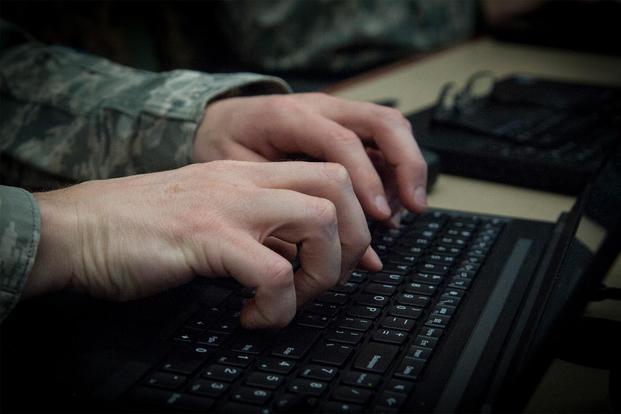The U.S. Air Force plans to add 1,264 new airmen in the cyber realm over the next few years as part of a broader service-wide strategy to improve cyber defense efforts, service leaders said Tuesday.
The cyber community is one of the few that is growing as the rest of the service prepares for significant cuts to its end strength in connection to the budget cuts associated with sequestration.
Lt. Gen. Robert Otto, deputy chief of staff for Intelligence, Surveillance and Reconnaissance (ISR), said the cyber domain continues to present mounting challenges in dealing with the hordes of data collected by government. The National Security Agency has received quite a bit of scrutiny for the manner it has probed international and domestic data.
“This is a big data problem on steroids. If you look at the amount of data that is transmitted every day, it is going to take a tremendous amount of investment,” Otto said at the 2013 Air Force Association Air & Space Conference and Technology Exposition, National Harbor, Md.
Lt. Gen. Michael Basla, the chief information officer, mentioned that the pressures of the current fiscal environment are adding some stress and uncertainty to the services’ cyber programs.
“It is a delicate balance between efficiency and effectiveness. We will strive to bring greater capability to our warfighters with cost in mind,” Basla said. “The demand for full-spectrum cyber capability across the department has increased significantly.”
Otto also said Air Force cyber strategy should focus on improving integration with ISR.
“This is an exciting time for cyber military planning. We will see a lot of progress over the next few years,” Otto said.
Service leaders also talked about improving cyber capabilities by addressing vulnerabilities and “technical gaps.”
“Identifying technical gaps includes the ability to identify key cyber terrain and pair it to vulnerability,” said Maj. Gen. Brett Williams, director of operations, US Cyber Command.
Gen. William Shelton, Commander, Air Force Space Command also told reporters the service was spending time examining cyber vulnerabilities.
“We’re doing reviews of vulnerabilities of every network. We’re trying to build in information assurance from the outset,” Shelton said.
Shelton talked about an Air Force approach which is both looking to identify and “plug” holes in current networks while simultaneously building new systems for the future.
“We want to ensure that Air Force IT capabilities are designed to support Air Force missions and effectively integrate with the joint community,” Basla said.
He also mentioned a cyber-weapons course at Nellis Air Force Base, Nev., designed to train Air Force personnel for cyber operations and made reference to a broader service-wide cyber strategy. Training the next-generation of capable cyber professionals will be necessary to address the growing threat.
“As a nation, we need to encourage our kids and grandkids to get into STEM (science, technology, engineering, mathematics). These are the skill sets doing the high end stuff,” he said.









